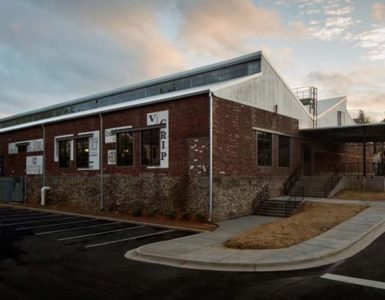I grew up in a house that looks large only in memory. The four members of my family lived together in a remarkably restricted space, with not one of the rooms entirely out of the earshot of the others. The bedrooms, all clustered around one of two floor furnaces, had closable doors — but, especially in winter, you faced a choice: privacy or heat?
Controlled by dome-shaped, doorknob-sized thermostats that flickered when they clicked on and off, the floor furnaces shuddered to life with a frightening clang, as though a metal door had slammed shut in some distant, underground dungeon. Following this came the unearthly sound of spontaneous combustion as flames leaped from the pilot light to the burners.
To me, it sounded like a creature with lungs made of thin aluminum drawing its first, deep breath. While the furnace burned, its metal walls would expand, popping and ticking with increasing speed. Just as the clicks and pings reached a fever pitch, the thermostat would flash and the furnace would deliver a loud, final “Bang!” before falling silent.
I was a spooky and imaginative child, a combination resulting in many sleepless nights for me and my family. I developed a strange compulsion: if awakened by the sound of the furnace coming on, I believed I had to stay awake until it went off again. In the dark, in my mind, the increasing rapid clicks of expanding metal represented something edging closer, closer, closer. Falling asleep granted permission for it to enter the room, while staying awake until the furnace shut down forced the unseen creature, its mission aborted, to drop through the grill and back into the world of uneasy dreams.
The furnace was friendlier in the daytime. Once on, it radiated heat upward through a metal grill in the floor about the size of a large doormat. In cold weather, straddling the grill and bathing in the radiant updraft, was the definition of pure luxury. Mother, her face puffy with sleep, would stand over it and sip coffee, her velvet housecoat catching the rising air and billowing outward, like a thick red parachute.
On chilly mornings, I would toss my shirt and jeans on the grill, turning them the way chefs flip steaks. The cotton absorbed the heat, making my clothes, as mother always said, “toasty warm.”
I last stood over that furnace two decades ago. Now, invisible computer-controlled thermostats regulate my home’s “central heat and air.” The vents barely whisper when heating and cooling the house. The units themselves are outside, hidden in shrubbery, unseen and unheard. The air flows from our ceiling, not our floors. I do not lie awake at night, forcing myself to stay alert until our efficient, silent Trane shuts down.
Even so, last night, my eyes lurched open at one-thirty. I was wide awake, fresh from a dream in which Clyde and I hiked to my childhood home. In the sunny backyard, Dixie Dawg — far removed from her normal place and time in my life — ran in tight circles, happy to see us again.
We entered the back door and found the house untouched, furnished as it was back when I was sixteen. We treated it like a museum, with even Dixie walking reverently past the narrow wooden bar where our family ate most meals, through the tiny dining room with its Sears and Roebuck chandelier, and into the living room, where mother’s heavy, floral furniture still hugged the walls.
Mounted just to the right of the couch and almost hidden by a picture frame: the small, burnished dome of the thermostat. I twisted it; it flashed.
The sound made Dixie jump. We laughed. The three of us lingered until the furnace switched off, its final “Bang!” jarring me awake, just as it did years ago.


Add comment